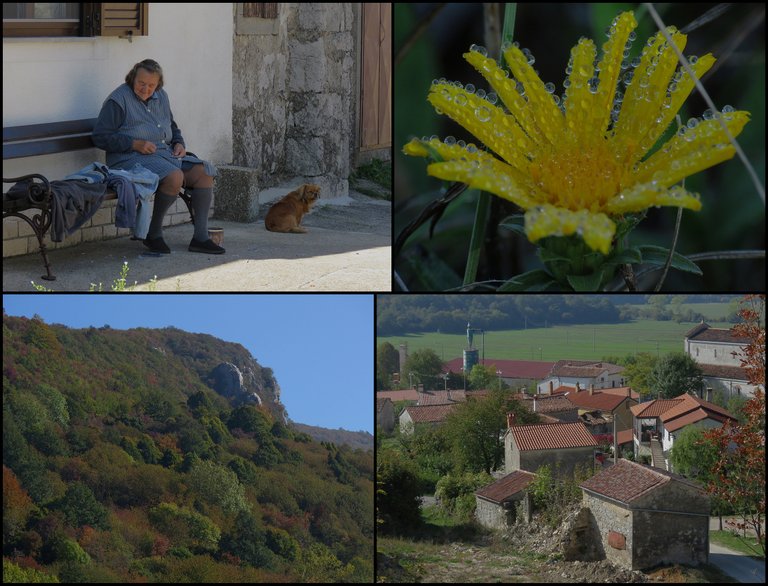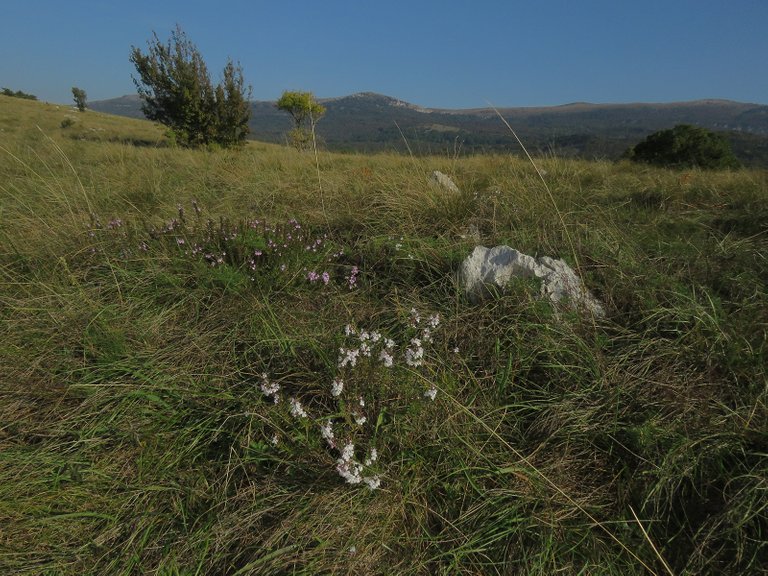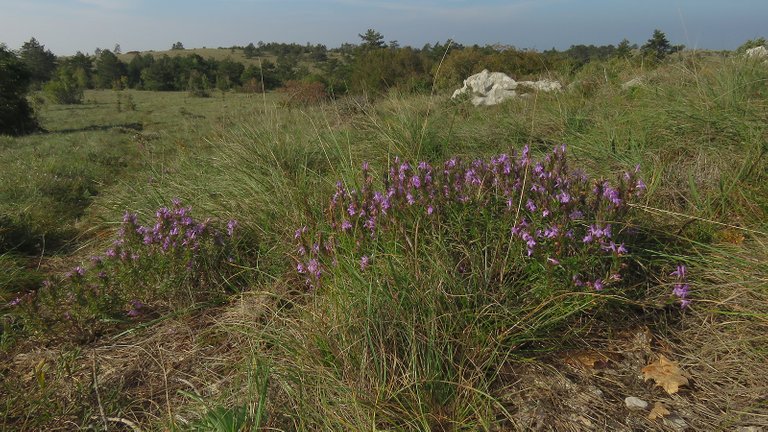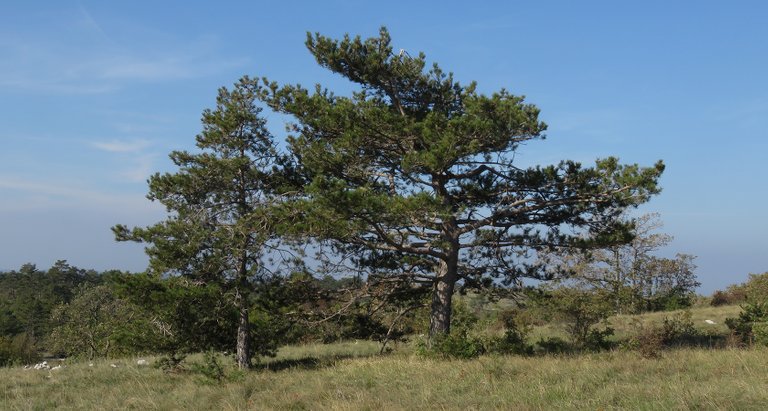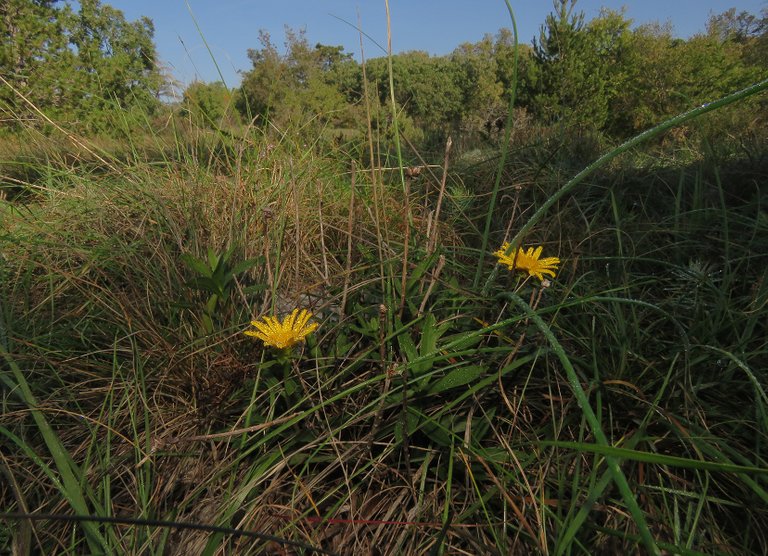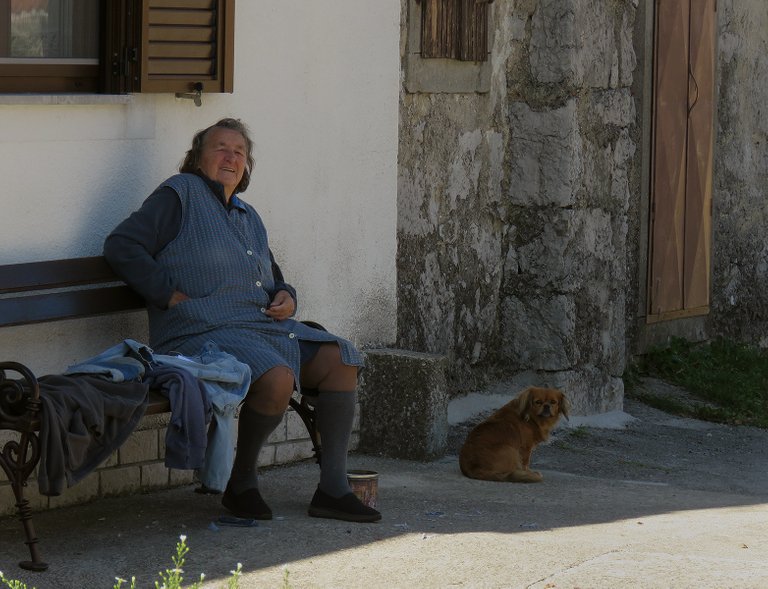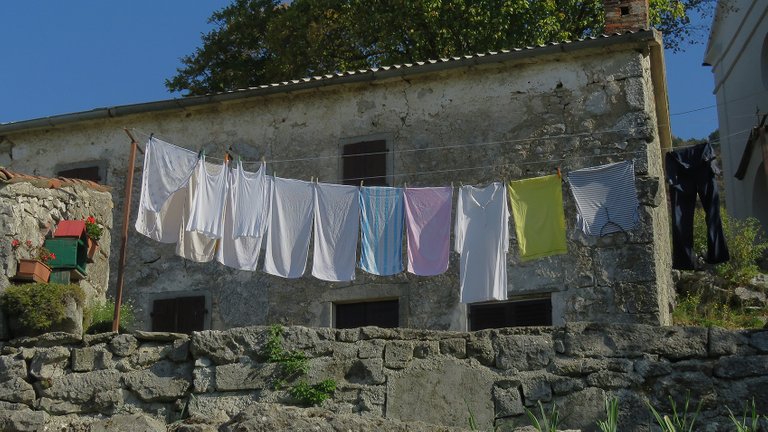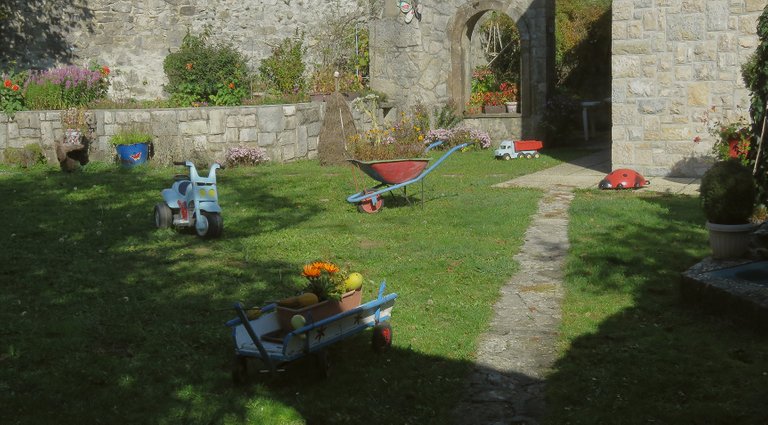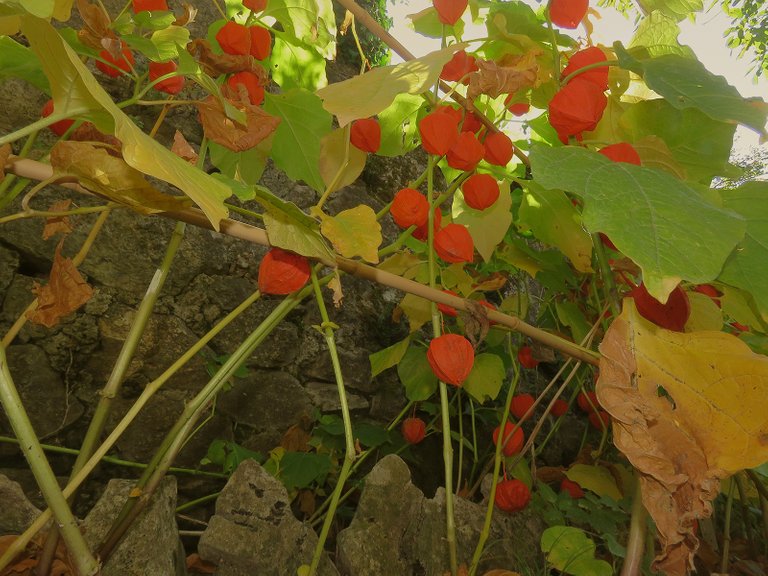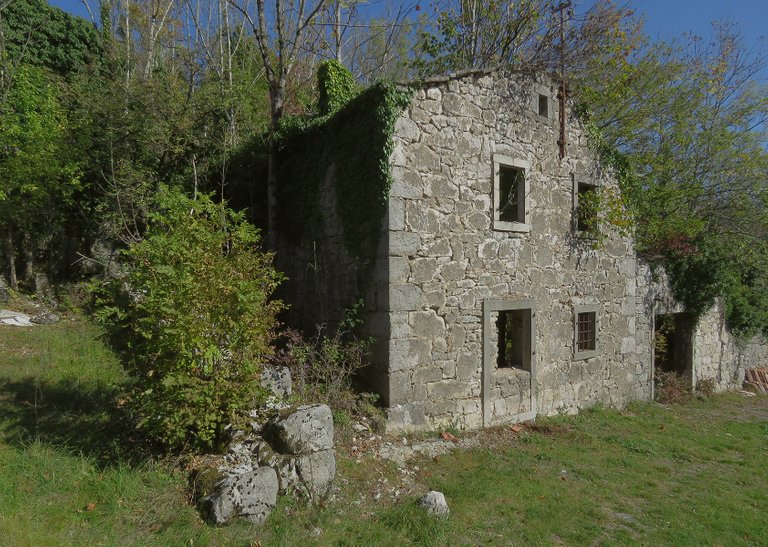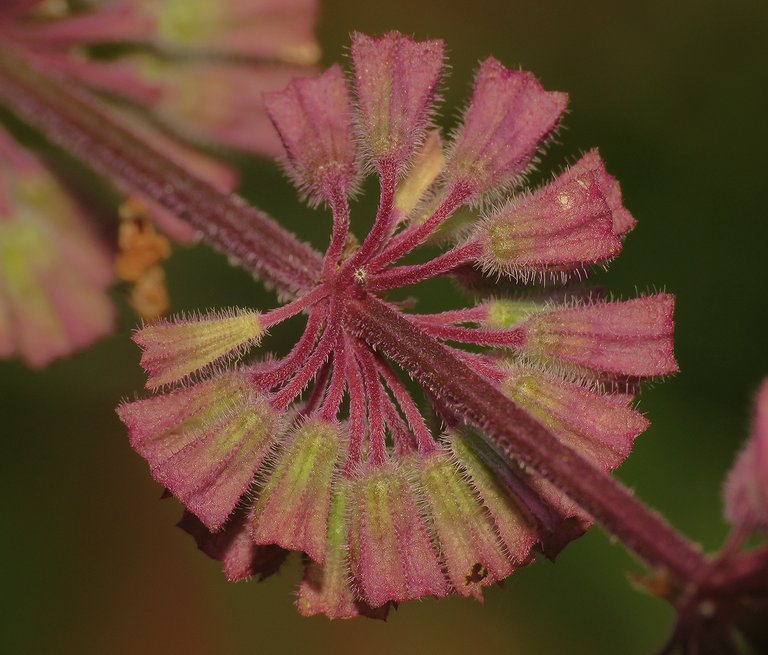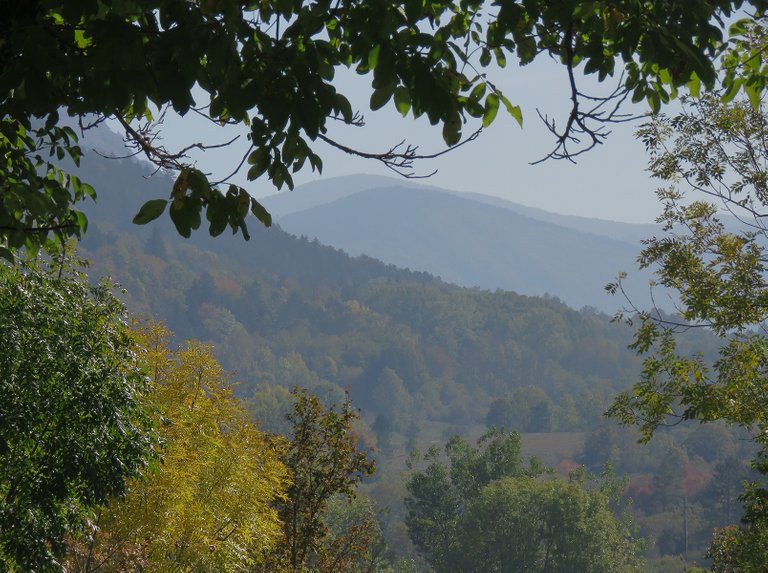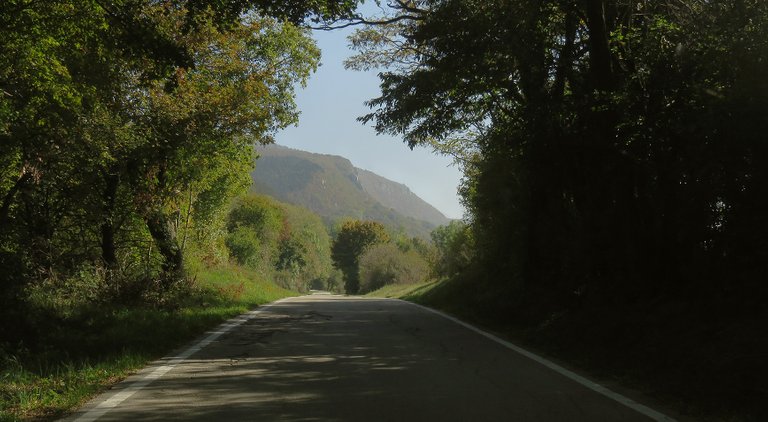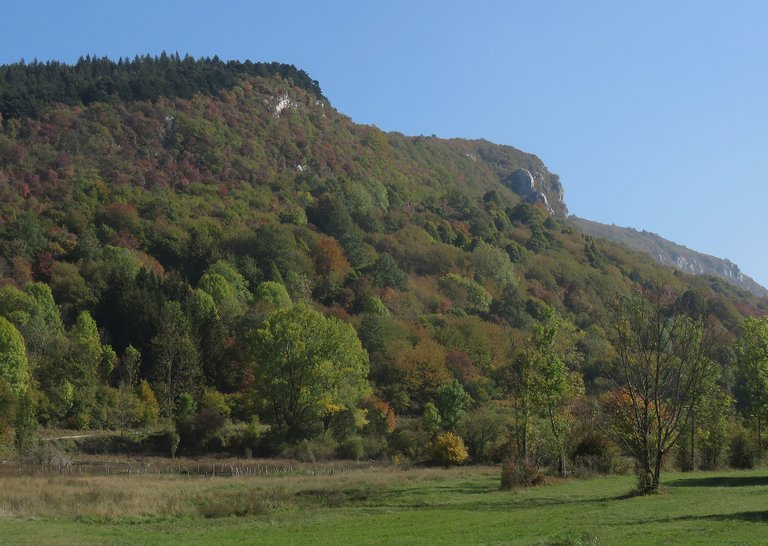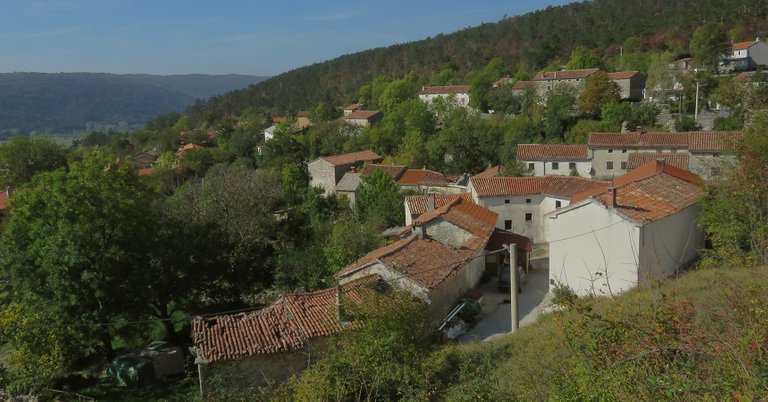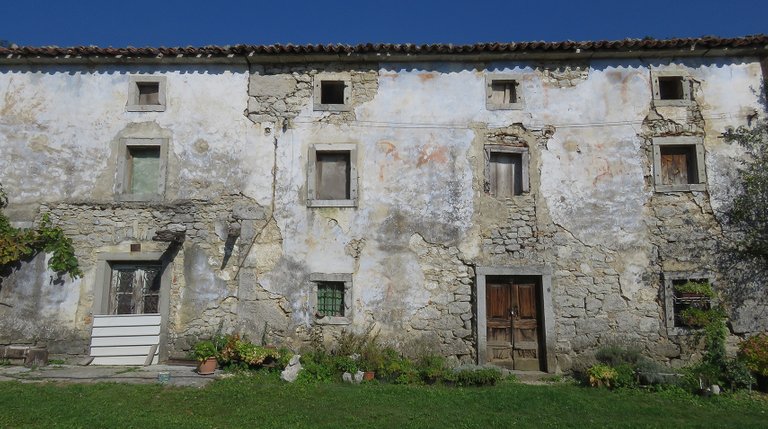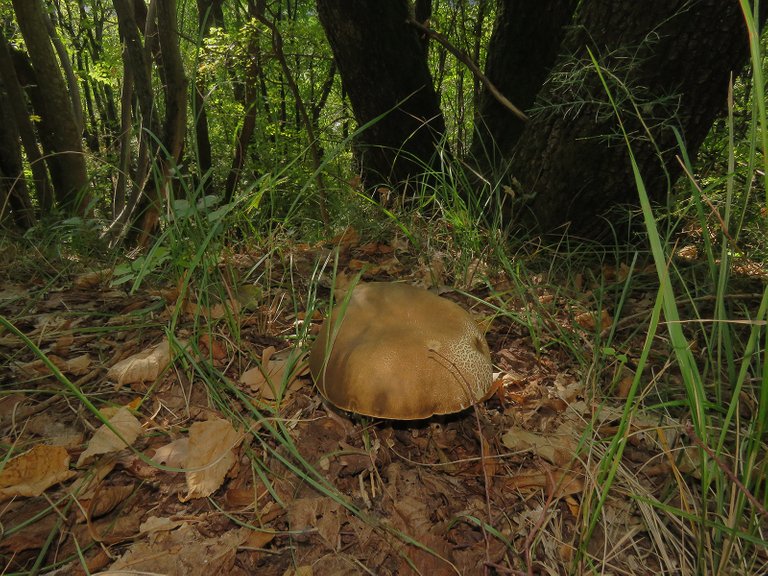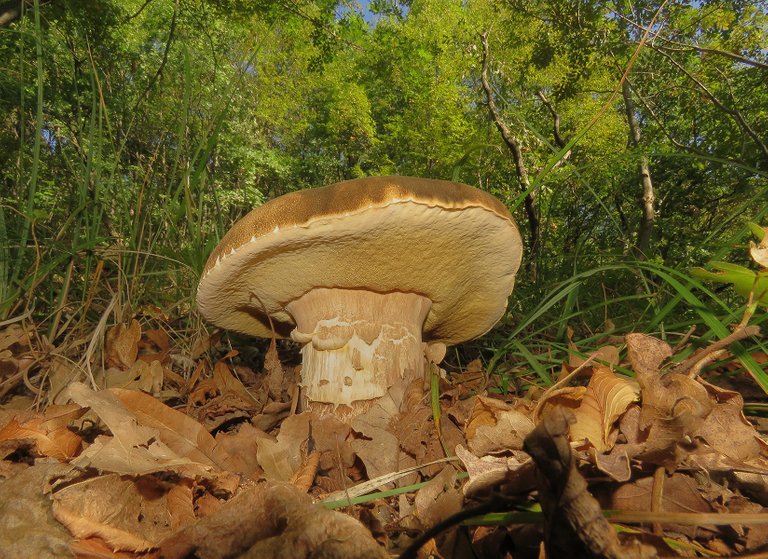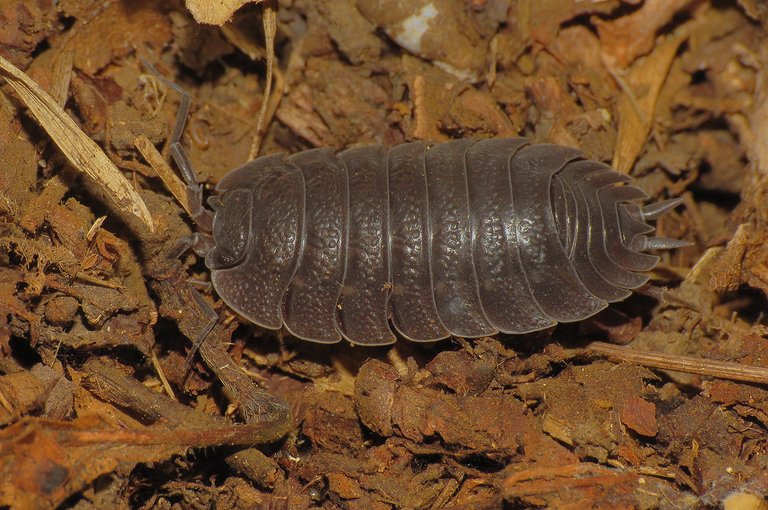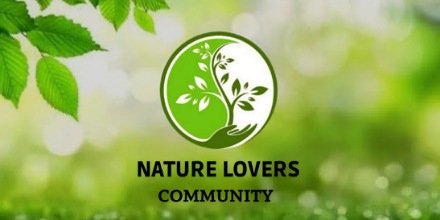Chicharia is the name of the mountainous area along the border with Slovenia, about a hundred kilometers from where I live. On the 17th of October 2022, I spent the morning and the first few hours of the afternoon there. Today, through a series of photographs, I'm going to show you some of the stuff I saw along the way.
I drove across the hills & valleys, through the woods and small villages of Chicharia, and I stopped quite a few times to photograph the things around me.
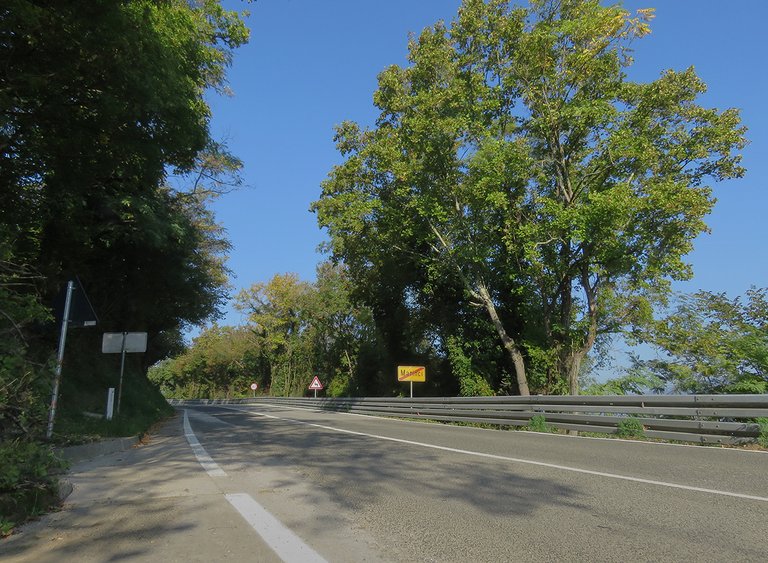
This photograph was taken about ninety kilometers from home ...

... when I stopped by the side of the road ...
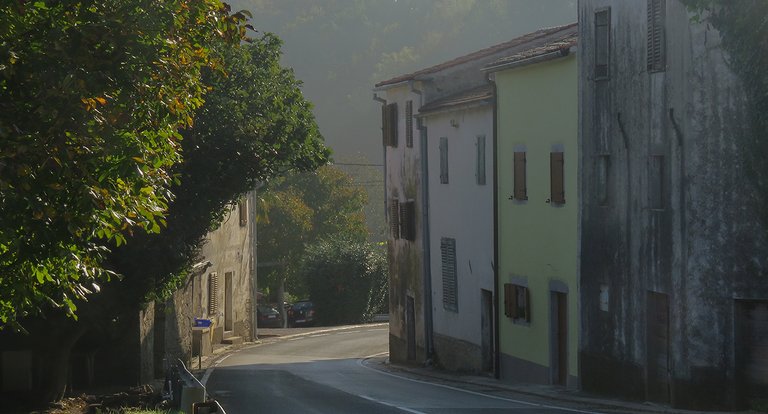
... behind the last house of the roadside village called Marintzi.

An old tractor was peeking from the lush vegetation just a few steps from my car ...
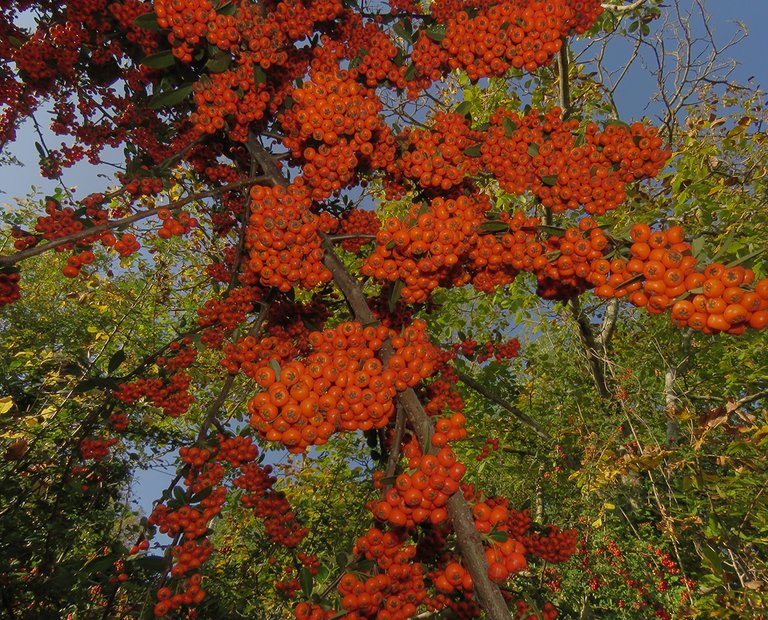
... and the branches of the nearest tree were covered with a multitude of small red fruits. Some minutes ago, after a quick Internet search, I found out that the tree in question is the Pyracantha coccinea.
Some fruits ended up on the ground, creating a beautiful pattern with the moss and small herbaceous plant that grow in the shade of the tree.
I overexposed this photograph slightly so you can take a better look at the tractor and some other old rusted stuff hidden in the shade.

Here you can see a bunch of Satureja subspicata flowers.
They were photographed twenty or thirty kilometers further, on the mountain meadow. Some flowers were violet ...
... others were white. Or pale pink, almost white. The color of the flowers can vary in this species.
On the Satureja subspicata plants shown in this and the following photograph ...

... the flowers have a slightly magenta tinge.
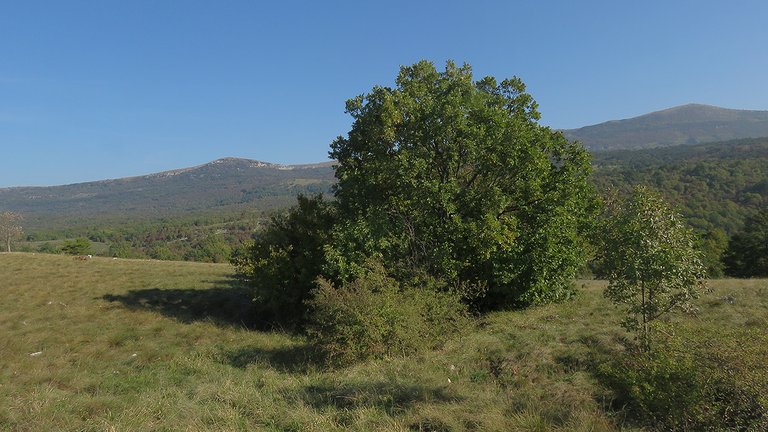
Here you can take another look at the scenery.
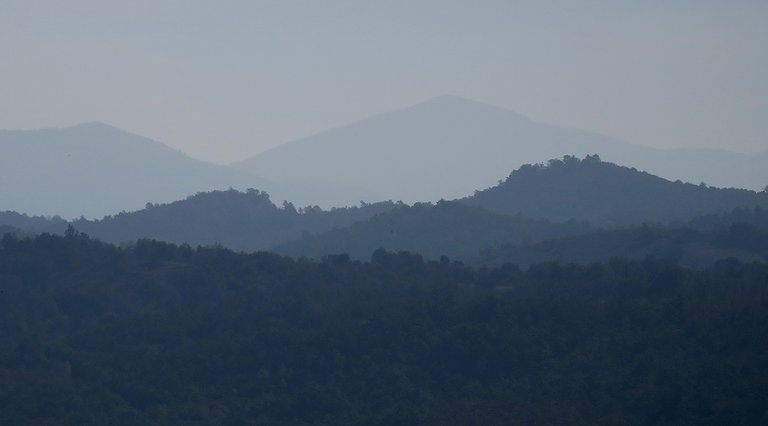
In this photograph, I zoomed in on the distant blue hills.
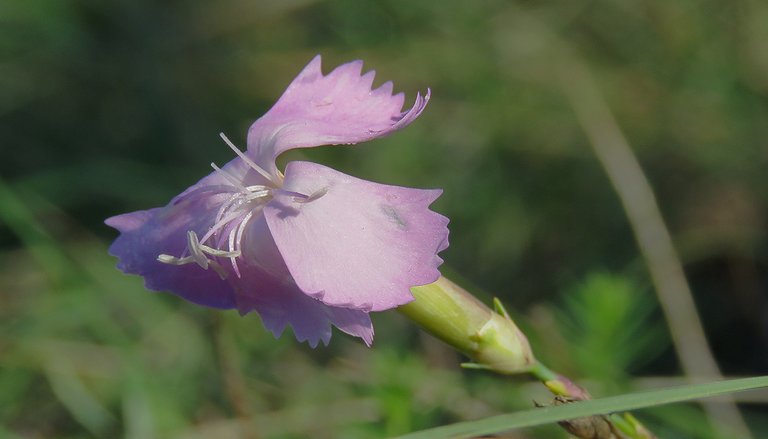
Here you can see another interesting flower that can't be found in my southern seaside area. This one belongs to the Dianthus godronianus plant. A species of wild alpine carnation.
In this photograph, two black pines (Pinus nigra) are posing in front of my camera.
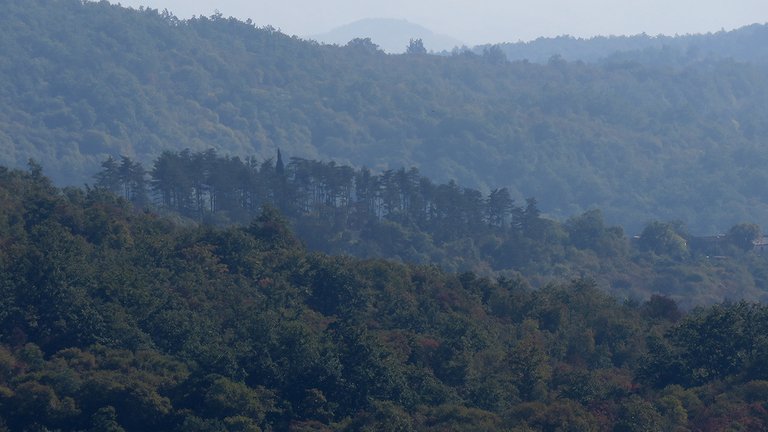
Here I zoomed in on a group of distant pines of the same kind surrounded by mostly deciduous vegetation.
In the shade, the plants were still covered with dew.

Here you can see a yellow flower of some plant that I wasn't able to identify. The flower is nicely decorated with transparent pearls made of water.
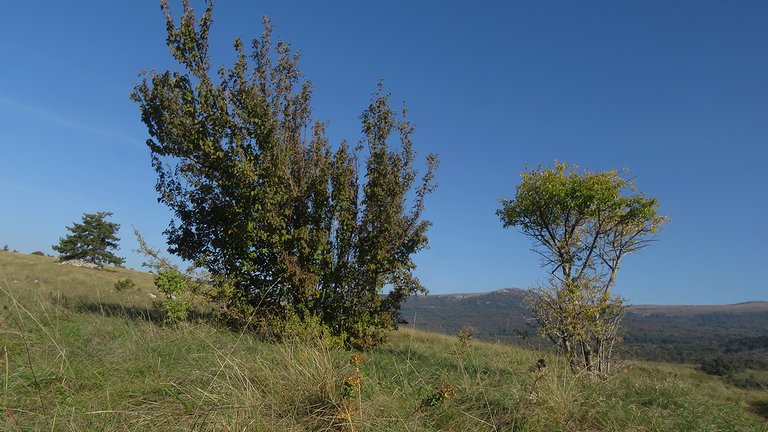
After taking this wide shot, I walked back to my car parked by the side of the narrow country lane and continued the journey.

Here you can see a decaying house on the outskirts of the village called Brest. The houses, shown in the following photograph ...
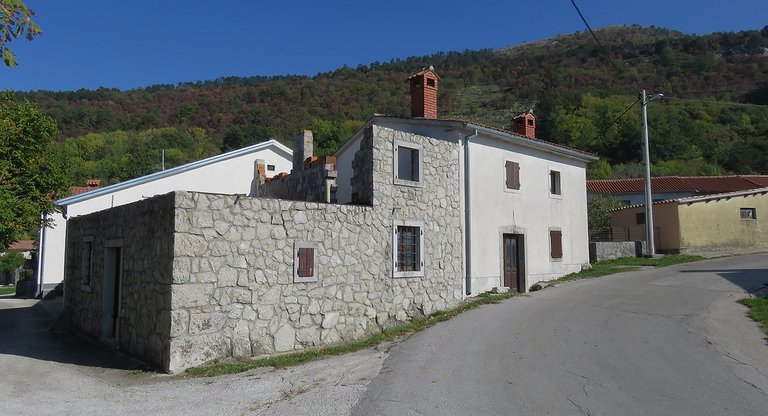
... are in much better shape.
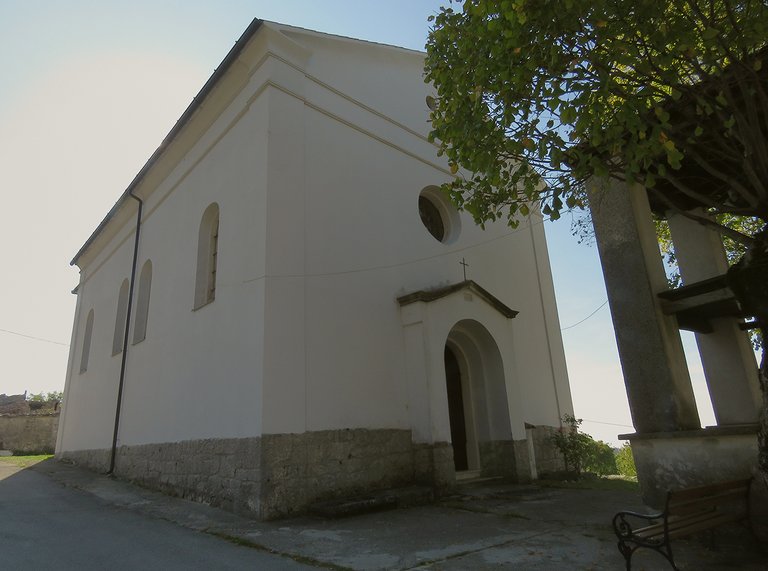
The Parish Church of the Holy Trinity is the biggest building in the village ...
... and it has a pretty unique bell tower. I mean, maybe a church tower like this is common somewhere else, but I don't remember seeing another one here in Istra, the peninsula on which I live.
In this photograph, I zoomed in on the stuff above my head so you can take a good look at the old bells.
Here you can take a look at the church's front facade seen through the space between the columns of the tower.
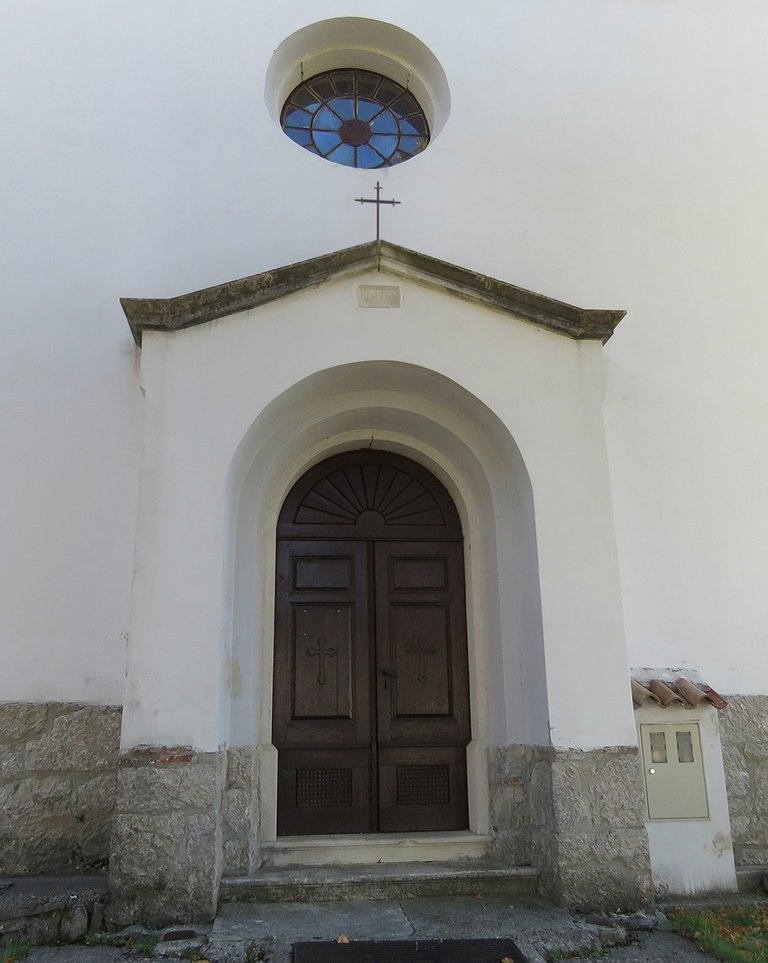
The Parish Church of the Holy Trinity was built in 1878. Before that, a smaller old church from the 14th century stood in the same place.

Here you can see one of the houses across the street from the church.
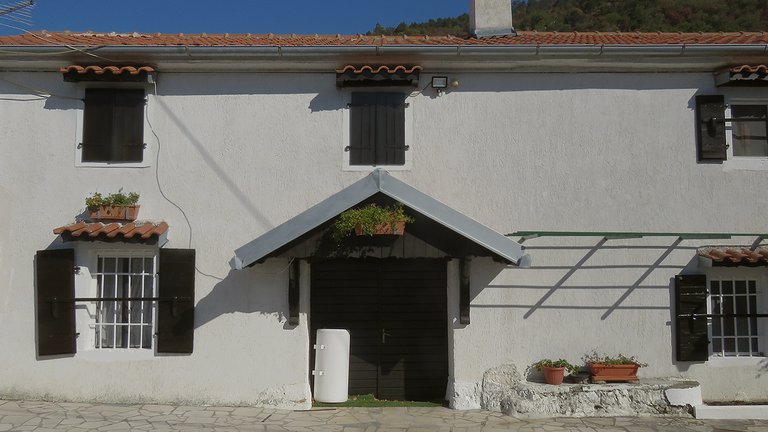
This is the same house seen from a different angle. The following scene ...
... was photographed in the same neighborhood. Very close to the church.

Some minutes later, the small dog was sleeping on the doormat.
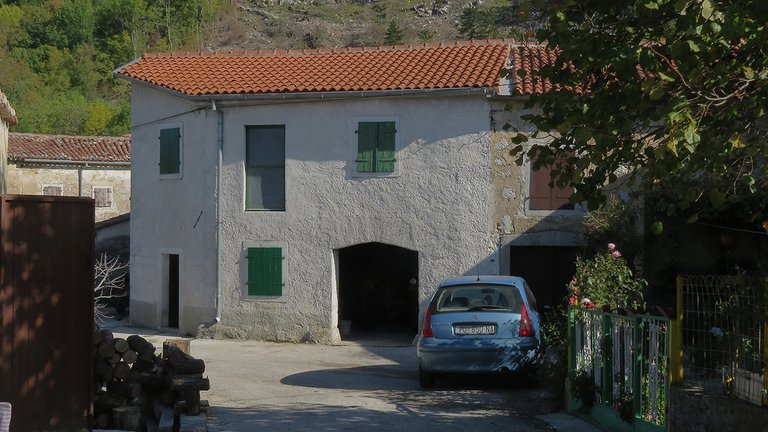
I photographed another ordinary house on my walk back to the car. You can see it in this shot.
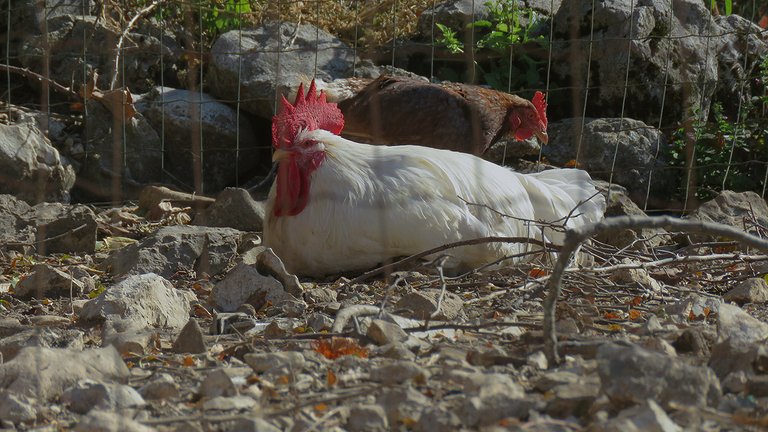
A bit further down the road, a white rooster was quietly enjoying the warm sunny morning ...
... and the clothes on the line were waving goodbye as I was getting ready to start the car and drive away.

This photograph was taken when I stopped again a kilometer or two from Brest. It was a very quick stop. A couple of minutes maximum.

Here I zoomed in on the line of autumnal colors ...

... that was decorating the slope of one of the hills around another village.
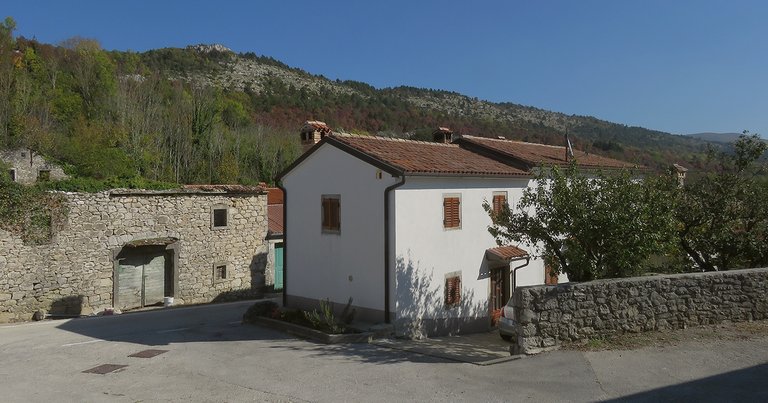
The village of Trstenik.
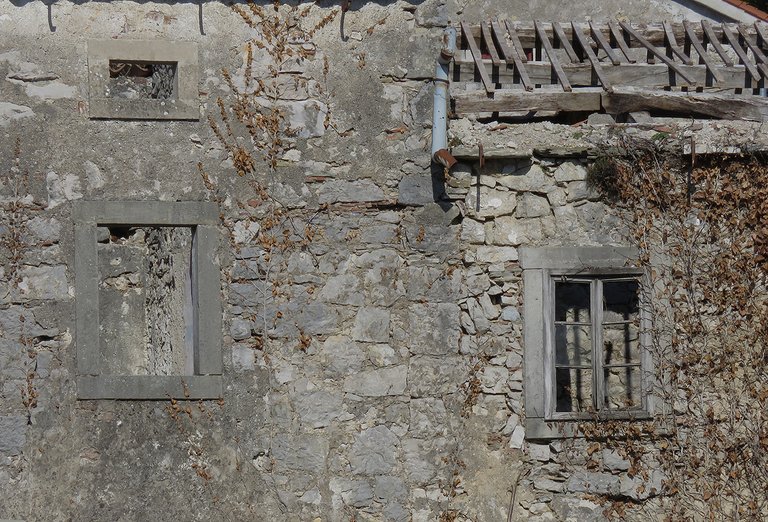
Here you can take a look at one of the rugged old houses on the small square in which I parked the car.

The distance between Brest and Trstenik is only about five or six kilometers.
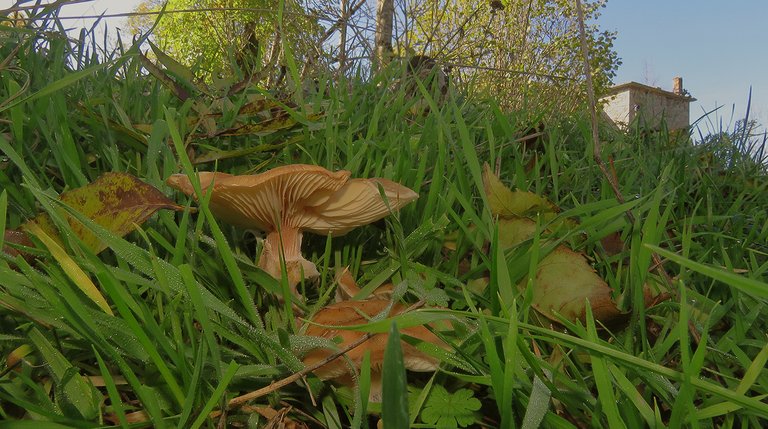
I found these mushrooms on the large lawn behind one of the abandoned houses on the outskirts of Trstenik.
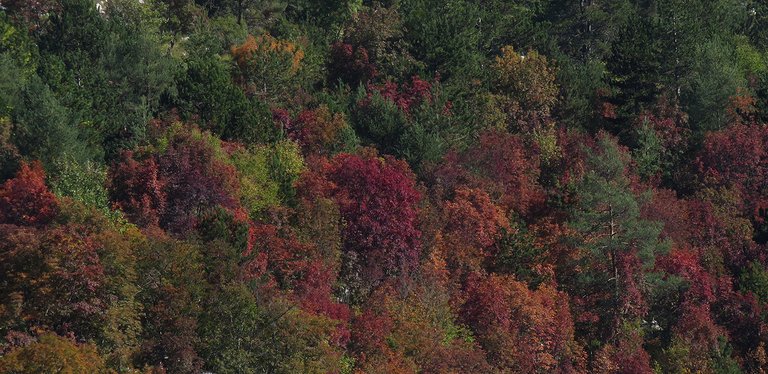
Here I zoomed in again on the line of trees that have started the seasonal change.
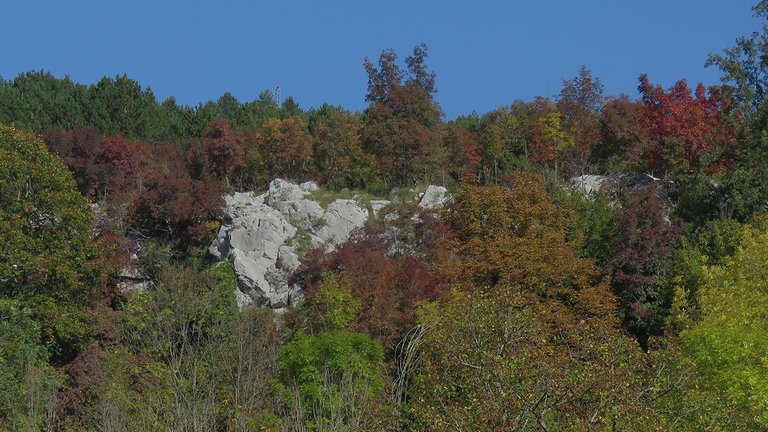
In the southern part of Istra, where I live, the scenery was still completely green so I enjoyed these vivid autumnal colors of Chicharia very much.
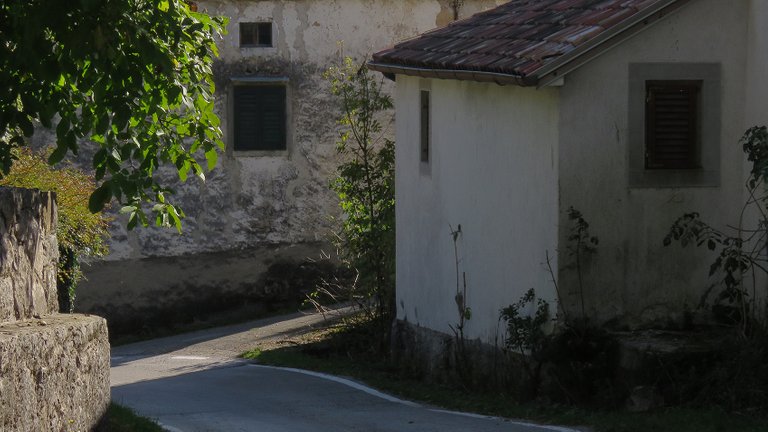
Soon I continued my rambling around the silent village. Here you can take a look at one of the small crossroads near the center of Trstenik. In the following photograph ...

... the focus is again on the nature around the village.
At one point I came across this lovely yard with some colorful cartoonish stuff displayed in it.
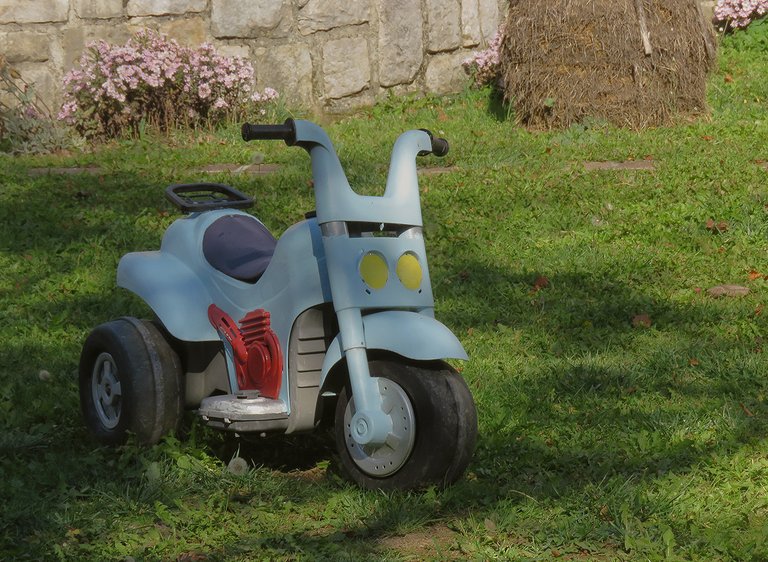
Here I zoomed in on the little blue tricycle.
In this set of four photographs, you can take a better look at the wagon that's transporting the flowerpots, the colorful wheelbarrow, the plastic truck miniature, and the five-spotted ladybug.
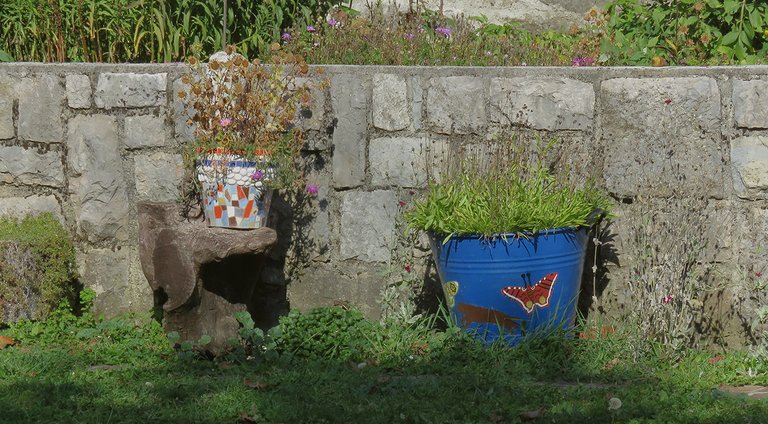
Here you can see two colorful, nicely decorated flower pots. One of them is a metal bucket turned into a flower pot.
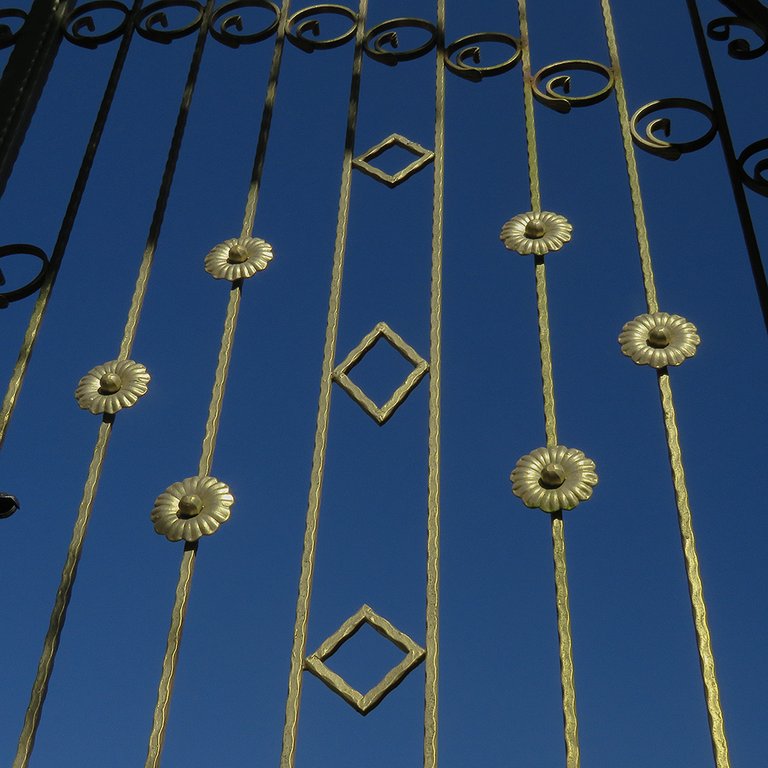
The bars of the gate were also embellished with floral and geometric decorations.
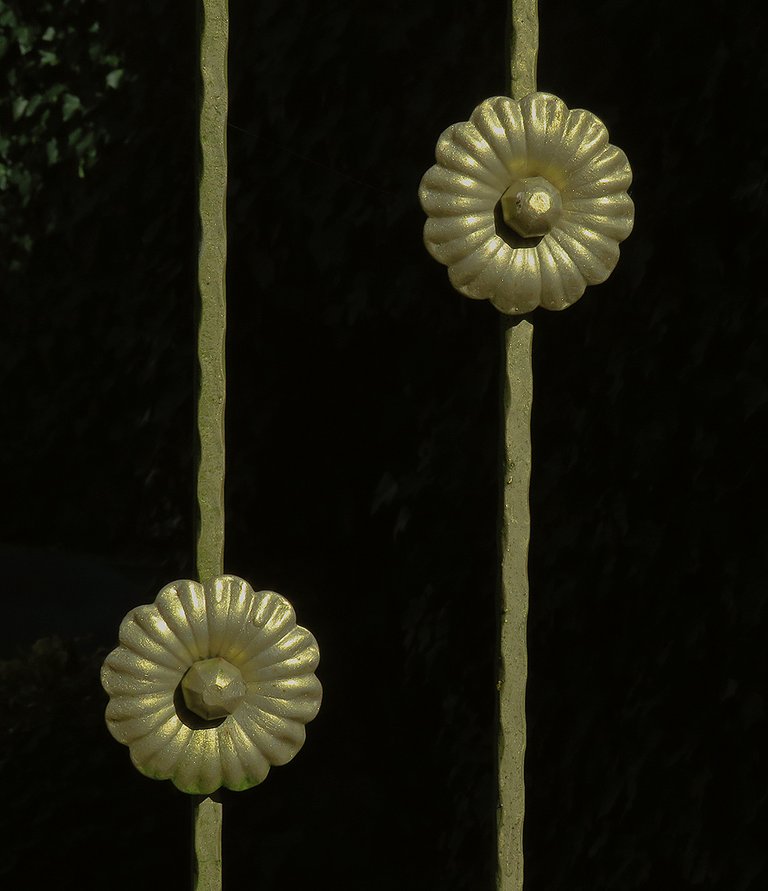
Golden flowers were growing on those bars.
These interesting, lantern-like fruits were photographed outside the gate.

They belong to the Physalis alkekengi plant that grew by the garden wall.

Some minutes later and fifty or sixty meters further, I took this photograph. Nothing special. Just a drystone wall and a bit of vegetation on the edge of the village.
At one point, on my way back to the car parked in the center of the village, I stopped by this abandoned house made of stone.

In some places, the walls were covered with Ivy.
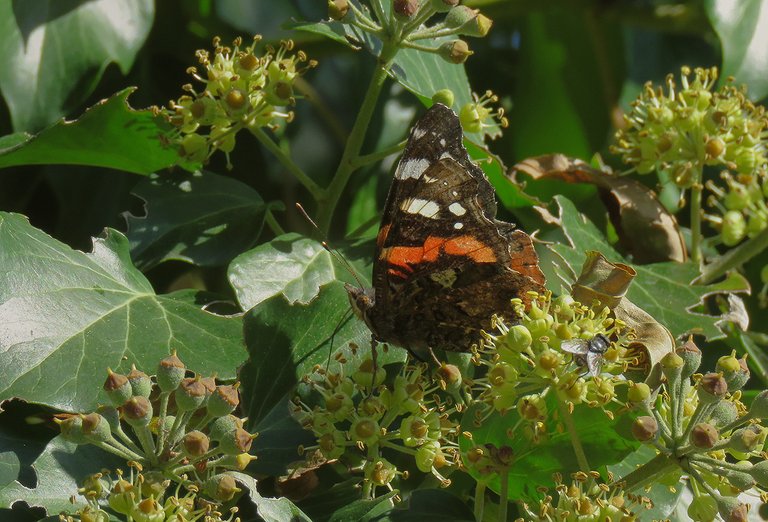
The ivy (Hedera helix) was in bloom and the Vanessa atalanta butterfly was weeding on the tiny flowers.

Down on the ground, on the lawn in front of the house, I found this interesting, very decorative floral shape. These tiny fruits ...
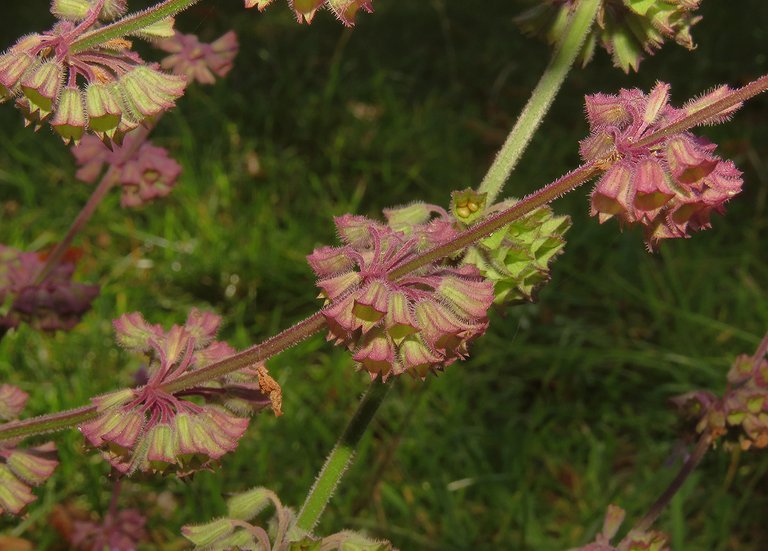
... belong to the Salvia verticillata plant.
Underneath the fruits ...
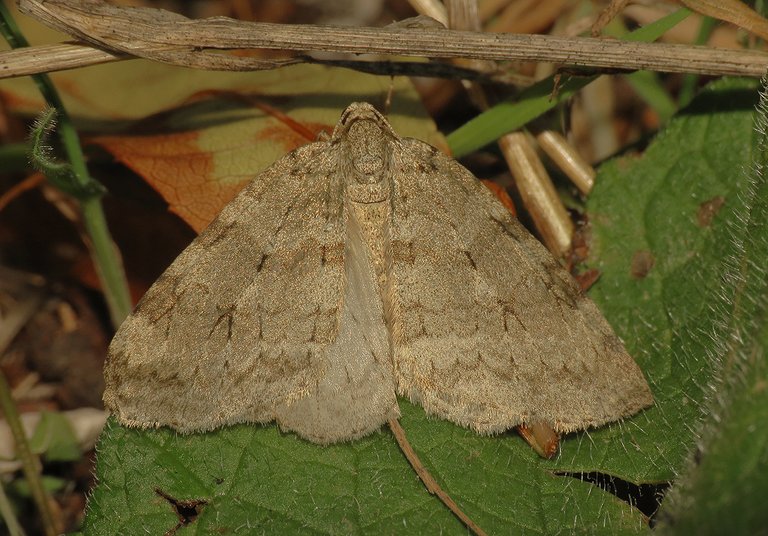
... on one of the leaves of the plant, a moth was resting.
I'm not sure about the species but it looks a lot like the Epirrita dilutata, commonly known as the November moth. Or the Epirrita autumnata, commonly known as the autumnal moth. The family is Geometridae and the genus is Epirrita, that's for sure. The previous photograph was taken with the flash of my camera on because the light was relatively low in the shade. Here, in ambient light, you can see the true colors of the insect.
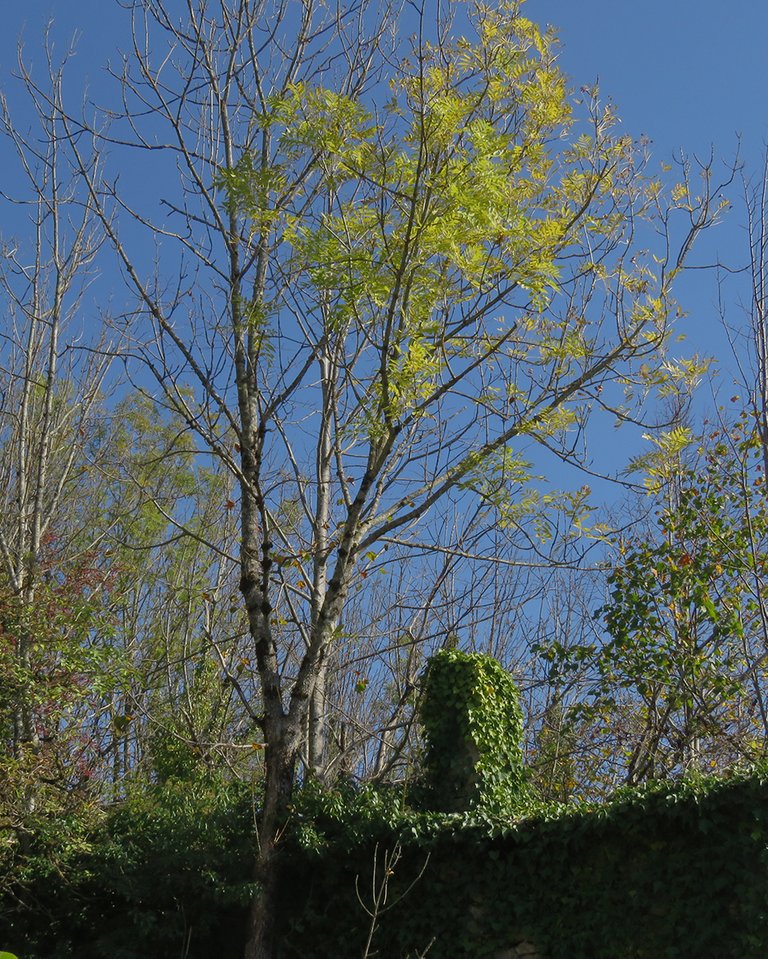
In this photograph, you can see the ivy-covered chimney and some of the trees around the abandoned house.

Here you can take a look at another ruin in that part of Trstenik. This one was photographed a bit closer to the center of the village.
Five or ten minutes later, I sat in my car and continued the journey.
The next stop was less than a kilometer from the village.
I stopped by the side of the road ...
... to photograph the beautiful scenery.
This shot was taken from the car. A kilometer or two further.
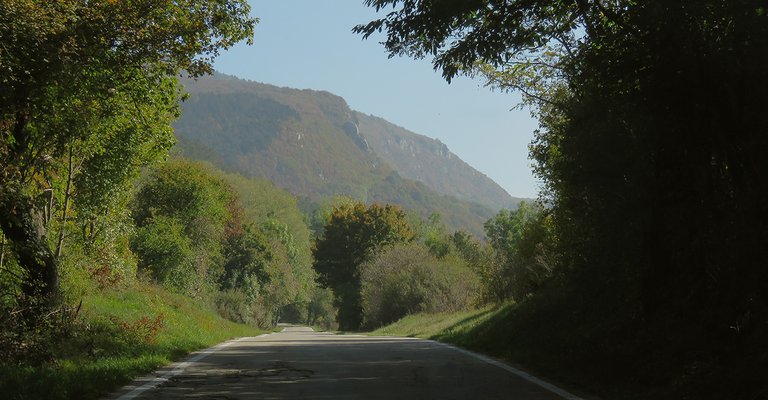
There wasn't much traffic in Chicharia, no one behind me, so I just stopped in the middle of the road and zoomed in for another shot.

A minute or two later and a couple of kilometers further ...
... to photograph the scenery just outside the village called Rachia Vas.
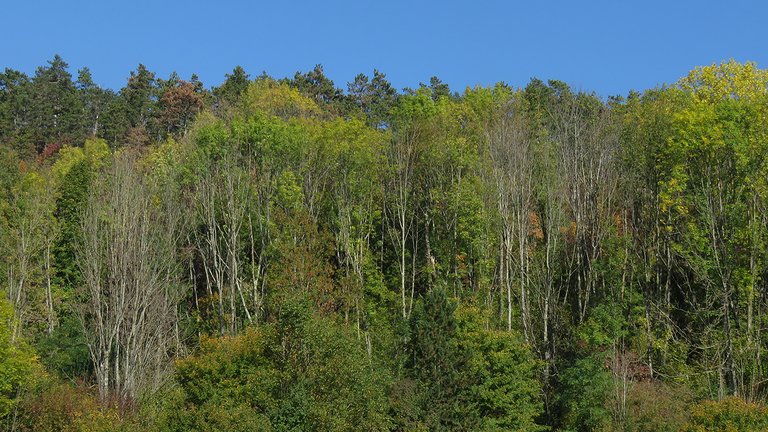
I didn't photograph the village this time.
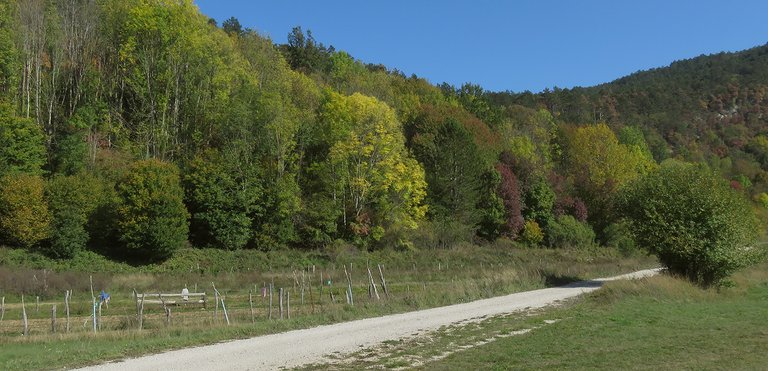
I parked the car by the side of the unpaved road shown in this photograph.
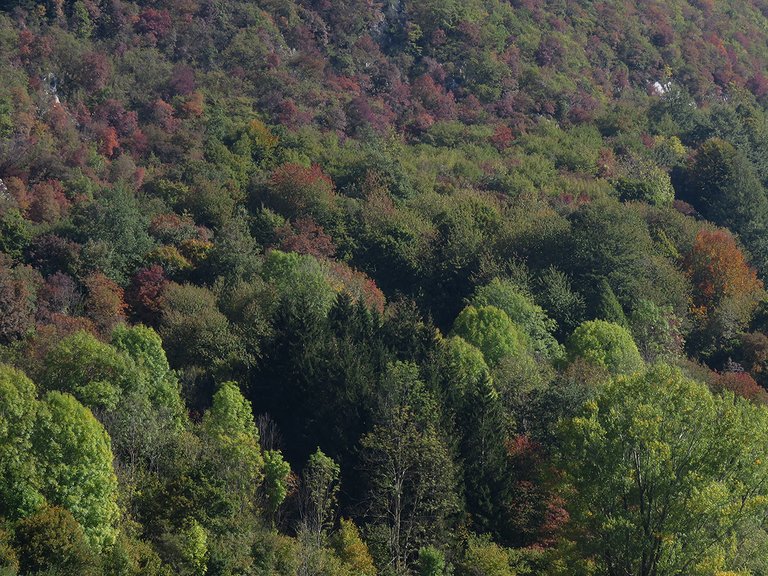
Here you can see the line where the green and autumnal colors meet.
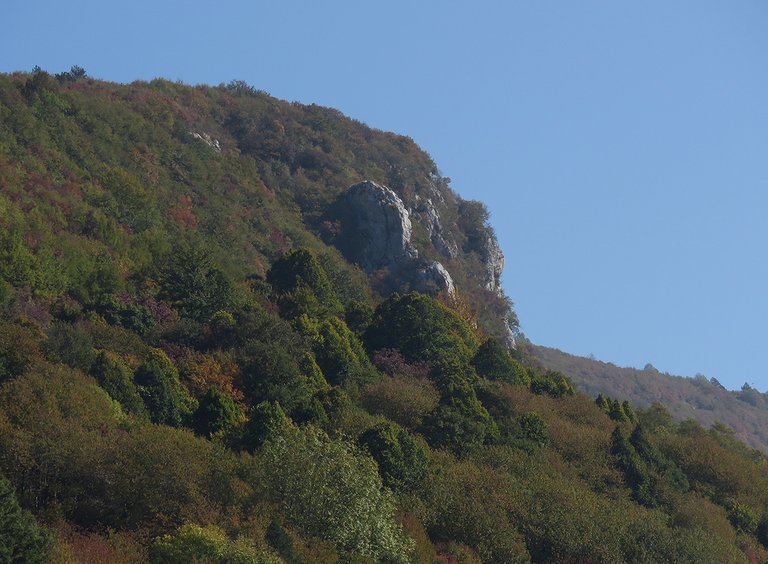
Here you can see some cool rocks protruding from the vegetation.
When this photograph was taken, I was more or less seven kilometers from Trstenik. I parked the car on the hill above Lanishche, the biggest settlement in scarcely populated Chicharia. Here you can see the houses on the outskirts of the small town.
From there, I continued toward the nearby village of Podgache. Halfway there, which means about five hundred meters from the last house of Lanishche, I stopped to photograph the graveyard.
This is Podgache. If you enlarge the picture by clicking on it you'll be able to take a better look at the cat that was crossing the street when the photograph was taken.
Here you can take a good look at one of the biggest old houses in the village.

This is a detail from the large yard of the neighboring homestead that includes two connected houses, a barn, and a large garage.
The last stop of this journey was in the forest about ten kilometers from Podgache and Lanishche.
This big Boletus edulis mushroom was photographed there, not far from the road.
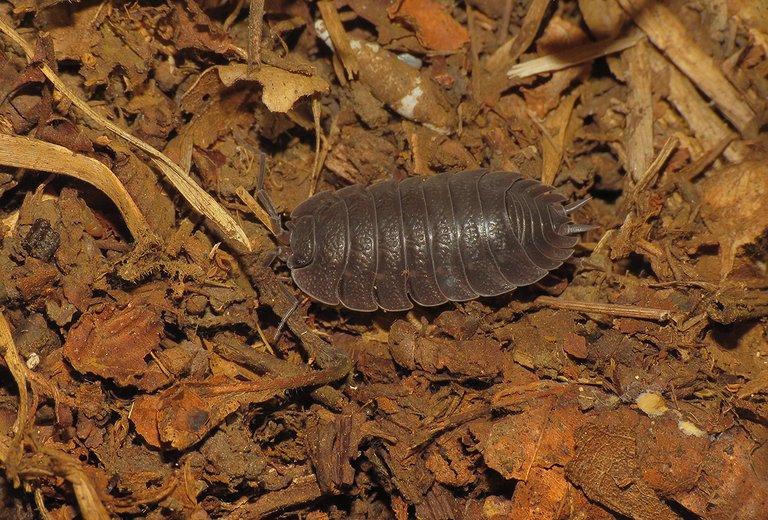
In the leaf litter around the mushroom ...

... I found a Porcellio scaber woodlouse ...
... and I was able to take a couple of photographs ...
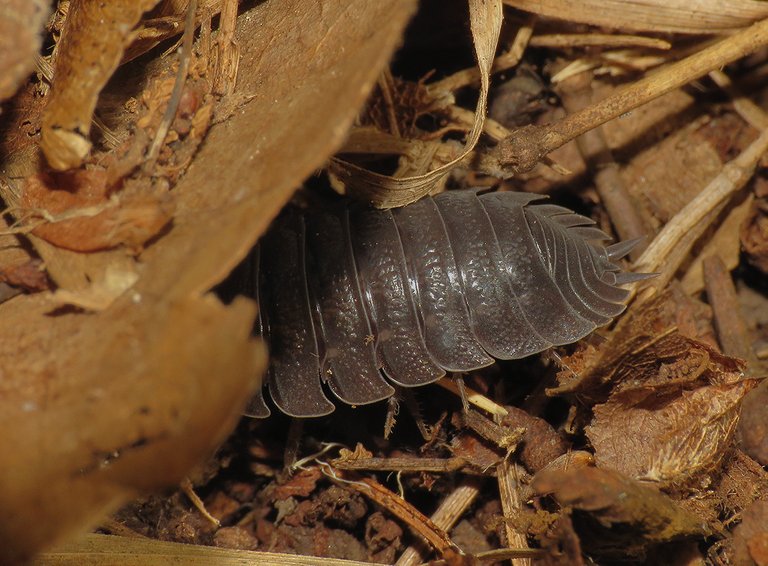
... before the small crustacean disappeared under the fallen leaves.

Here you can see a well-camouflaged cricket.
This Modicogryllus frontalis nymph was photographed on the muddy gravel very close to the road.

As I was sneaking to get closer to the insect ...
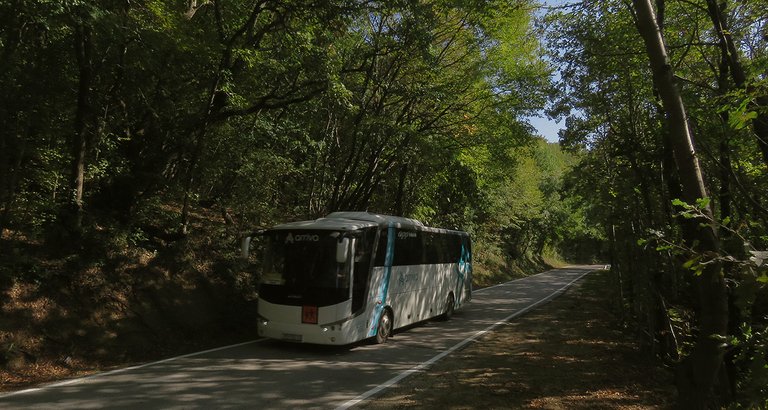
... an excursion bus passed by.
Half an hour later I was driving directly back home.
AND THAT'S IT. HOPE YOU ENJOYED THE TOUR. AS ALWAYS IN THESE POSTS ON HIVE, THE PHOTOGRAPHS ARE MY WORK.
